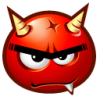-
Pranešimai
1.259 -
Užsiregistravo
-
Lankėsi
-
Atsiliepimai
92.9%
Turinio tipas
Forumas
Kalendorius
Parduotuvė
Akademija
Skelbimai
mantasiz Pranešimai
-
-
Blackberry Curve 8900
Samsung Galaxy 550
P.S Gal kas žinote kada tiksliai išeis S3 ?
-
Nu jo pas Bragą namuose vien žalia, o pas Leirą svečiuose vien raudona, kaip ir value
Kur tu čia žiūri ?
-
Gal aiškiau galėtum ?
-
Sveiki pirkčiau V. Valentinavičiaus vaodovėlį FIZIKA 8 klasei. Pasiūlymus - PM
-
2-3 dienos
Tai gal ai6kiau gal4tum ????
-
-
-
-
-
-
Jeigu web - tai tada manau būtų įdomu ir dalyvaučiau :)
-
30 min !? Pagal skaitliuką nuo Vasario 16, 2012 :)))
-
NBA Vasaris: +7,90
ir vel knicksai pashiko
Kas svarbiausia nesuėjo tas statymas kurio kofas buvo mažiausias...
-
-
Kiek girdėjau tai tas egzaminas skirtas tik tam jog pajustum kaip viskas bus per tikrąjį egzaminą :)
-
8 pranešimai per metus. Va šitam nariui niekas negali ##### proto už flood'inimą :D
-
Sveiki gal žinote kaki toturiala kaip susikurti tokia parasta programele ? Ji parodyta 2:00
P.S Reikia Andriodui
-
-
Kas čia daros, kad visi filmų proejektus pradėjo pardavinėti ?
-
Taigi pažiūrėkit: http://www.interweb.lt/index.php
Kaip manot apsimoka pirkti? patikima?
Visa info apie imone ir t.t yra, tai gal ir patikima
-
Sveiki, perku pratybų atsakymų portalą, gali būti be lankomumo. Siūlymus į PM
-
Sveiki, gal kas galėtumėte išversti šį tekstą ? Reikia projektiniui darbui :)
Known to the Romans as Nivaria (from the Latin nix, nivis, "snow"), a reference to the snow on top of El Teide, Tenerife bears a name that is also a reference to this volcano, and was used for the island by the Guanches of the neighboring island of La Palma, “Tene” signifying “mountain” and “ife” white (the “r” was added by the Spanish). To the natives of Tenerife, the island was known as Chenech, Chinech or Achinech. As the legend goes, many islands, among them Tenerife, were the uppermost peaks of Atlantis, a continent that sank under the ocean in a catastrophic event which left only the highest mountains above sea level.
It is also believed that nearly 3 million years ago the island known today as Tenerife was three separate islands with three mountain ranges: the Anaga, Teno and Valle San Lorenzo. Then, as the consequence of a remarkable volcanic process, they melted together forming the island of Tenerife.
Tenerife at the time of its conquest was composed of nine distinct menceyatos, as the small kingdoms of the Guanches were known. Though the Spanish forces under the Adelantado ("military governor") Alonso Fernández de Lugo, suffered a crushing defeat at the hands of the Guanches in the First Battle of Acentejo in 1494, the Guanches, eventually overcome by superior technology and diseases to which they were not immune, surrendered to the Crown of Castile on December 25, 1495.
As on the other islands of the same group, much of the native population of Tenerife was enslaved or succumbed to diseases at the same time as immigrants from various places in Europe associated with the Spanish Empire (Portugal, Flanders, Italy, Germany) settled on the island. Native pine forests on the island were cleared to make way for the cultivation of sugarcane in the 1520s; in succeeding centuries, the island’s economy was centered around the cultivation of other commodities such as wine and cochineal for making dyes, as well as bananas.
The First Fleet, led by British Captain Arthur Phillip, stopped at Tenerife on June 3, 1787 for fresh water, vegetables and meat. It would then continue on to Botany Bay, where it would create the first European settlement in Australia on January 26, 1788.
The island was attacked in 1797 by the British. On July 25, Horatio Nelson attacked Santa Cruz de Tenerife, the capital town of Tenerife and headquarters of the Captain General. After a fierce engagement, the British were repelled; Nelson lost his right arm as he tried to disembark at the shore. On September 5, another attempted landing in the region of Puerto Santiago was fended off by the inhabitants of the Valley of Santiago, who hurled stones at the British from the heights of the cliffs of Los Gigantes.
Less hostile visitors arrived at the island in succeeding centuries. The naturalist Alexander von Humboldt ascended the peak of Mount Teide and remarked on the beauty of the island. Tourists began visiting Tenerife in large numbers in the 1890s, especially the northern towns of Puerto de la Cruz and Santa Cruz de Tenerife.
Before his rise to power, Francisco Franco was posted to Tenerife in March 1936 by a Republican government wary of his influence and political leanings. However, Franco received information and in Grand Canary agreed to collaborate in the military coup that would result in the Spanish Civil War; the Canaries fell to the Nationalists in July 1936 and its population was subject to the mass executions of opponents to the new regime. In the 1950s, the misery of the post-war years caused thousands of the island’s inhabitants to emigrate to Cuba and Latin America.
Jeigu kas nors apsiimsite vertimu, prašau parašyti į PM :)
-
-
pats išeisiu iš static.lt ir pereisiu prie dedikouti.lt nes paleidzius minecraft serveri ant tu paciu resursu static.lt lagina o vpsnet.lt nelagino.



AM kategorijos laikymas
Ne į temą
Atrašyta
Norėjau užduoti klausimą : Jeigu akys blogos praleis ?